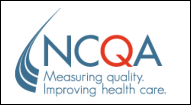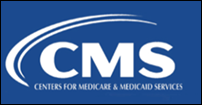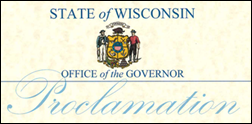Curbside Consult by Dr. Jayne 6/19/17
I received some sad news from a friend this week whose employer recently migrated to a single vendor platform. She’s worked for her health system’s IT team for years, primarily supporting the ambulatory practices on the practice management application. When the group initially decided to migrate to a new platform, all IT employees were given the opportunity to either transition to the team that would be supporting the migration, or to remain in their current positions with the understanding that following the migration, they would move to positions supporting the new application. She’s developed deep relationships with her customers over the years, and agonized over the decision. She finally decided to stay where she was, keeping the lights on for the legacy application users while everyone else focused on the shiny new thing.
Plans changed along the way, however, but the leadership didn’t give any hints to the support teams. Literally five days after cutover she was given notice that her employment would be ending in two weeks. She of course is welcome to apply for any of the new support positions, however, all of them were posted as requiring current certification on the new system. Having been a CMIO, I understand how these decisions are made, but it seems like a gutless way to get rid of people. I’m not aware of this particular vendor being willing to accept freelance people off the street to train and certify on their products, nor would it be reasonable to expect a full-time employee to try to train on a new system on the side and at their own expense.
It’s not about reducing headcount, because they actually have more posted open positions than the number of people they’re laying off. More likely, it was seen as a way for the health system to get out of paying for training. Not to mention, getting rid of people with 15 to 20 years experience and replacing them with people earlier in their careers is generally cheaper in its own right. The problem, however, is that they didn’t just jettison the employees, but they also got rid of the relationships and history they have built with their customers. They’ve given no weight to the fact that these support workers know their customers, know how the offices run, and understand the dynamics at play. One might think that could be part of the strategy, if they were worried about the “old guard” creating complications with new processes and policies, or being a barrier to effective change.
However, I know enough people at her employer to understand that they didn’t do hardly any work on people or process, but rather treated this migration simply as a technology swap-out. Based on their outreach to me to see if I’m available for some consulting work, I suspect they’re reaping what they sowed as far as failing to use the opportunity for further standardization and clinical transformation. I hate, though, to see good employees negatively impacted by lack of executive strategy and will. Fortunately, my schedule doesn’t allow me to get involved with them right now, because I’m not sure I could do it in good conscience. Although they may think this was strictly a financial decision, when you factor in the loss of “soft skill” expertise, such as knowing how best to handle Dr. Frazzled’s high-maintenance billing team, and the ramp-up time for new technical employees who don’t know the landscape, I bet there is a negative financial impact.
One could argue that there is also a larger domino impact, looking at a health system that provides a large volume of uncompensated care. They’re about to release quite a few workers in their 50s and early 60s, and based on IT hiring needs in the city, they’re going to struggle to find jobs. Eventually COBRA runs out, assuming former employees can afford it in the first place, and depending on what happens with healthcare legislation, they may not be able to afford individual plans. They may wind up needing uncompensated care, with ultimately greater cost to the system in the long run. Although the logic may be a leap, it’s something to think about especially when you’re talking about a non-profit organization that advertises the breadth of their community-mindedness.
Those of us who have seen the balance sheets for those kinds of organizations know the numbers are a little different from what they advertise. They can afford nearly half a billion dollars for an EHR migration, but they’re going to cheap out on training a couple dozen seasoned employees who have been loyal workers, some for decades. They can afford hundreds of millions in capital expenditures but don’t even provide cost of living wage increases to their low-paid clinical employees, let alone to the support teams like IT. Especially for nonprofits, shouldn’t charity begin at home? As a small business person, I understand that businesses need to make money. Even the not-for-profit ones need money to further their missions. Too often, however, that mission is keeping up with the proverbial Joneses rather than being good stewards. It reminds me of when I was in the hospital this winter, when I didn’t get scheduled medications on time due to a staffing shortage. Is it really cheaper to risk a poor outcome? When did people become less valuable of an asset than mammoth IT systems or another outpatient imaging facility or ambulatory surgery center? And do we really need another glass and marble temple to healing when the actual patient care suffers? Every time I think about going back to a health system or large hospital, these are the kinds of issues that keep me up at night.
Fortunately for my friend, there are plenty of opportunities in her area that use the system on which she is proficient. She has a great work history and strong references, so hopefully she will find something quickly. I’d be happy to bring her on to do some projects, but not enough for a full-time position. I’ll help her however I can though, until she finds something permanent. I’m sure her story is representative of those that happen every time a hospital or health system makes a big change. But just because it happens, it doesn’t make it right.

Email Dr. Jayne.















You know what will radically improve patient lives? Universal healthcare, access to housing, paid childcare, better public transport. Improve a…